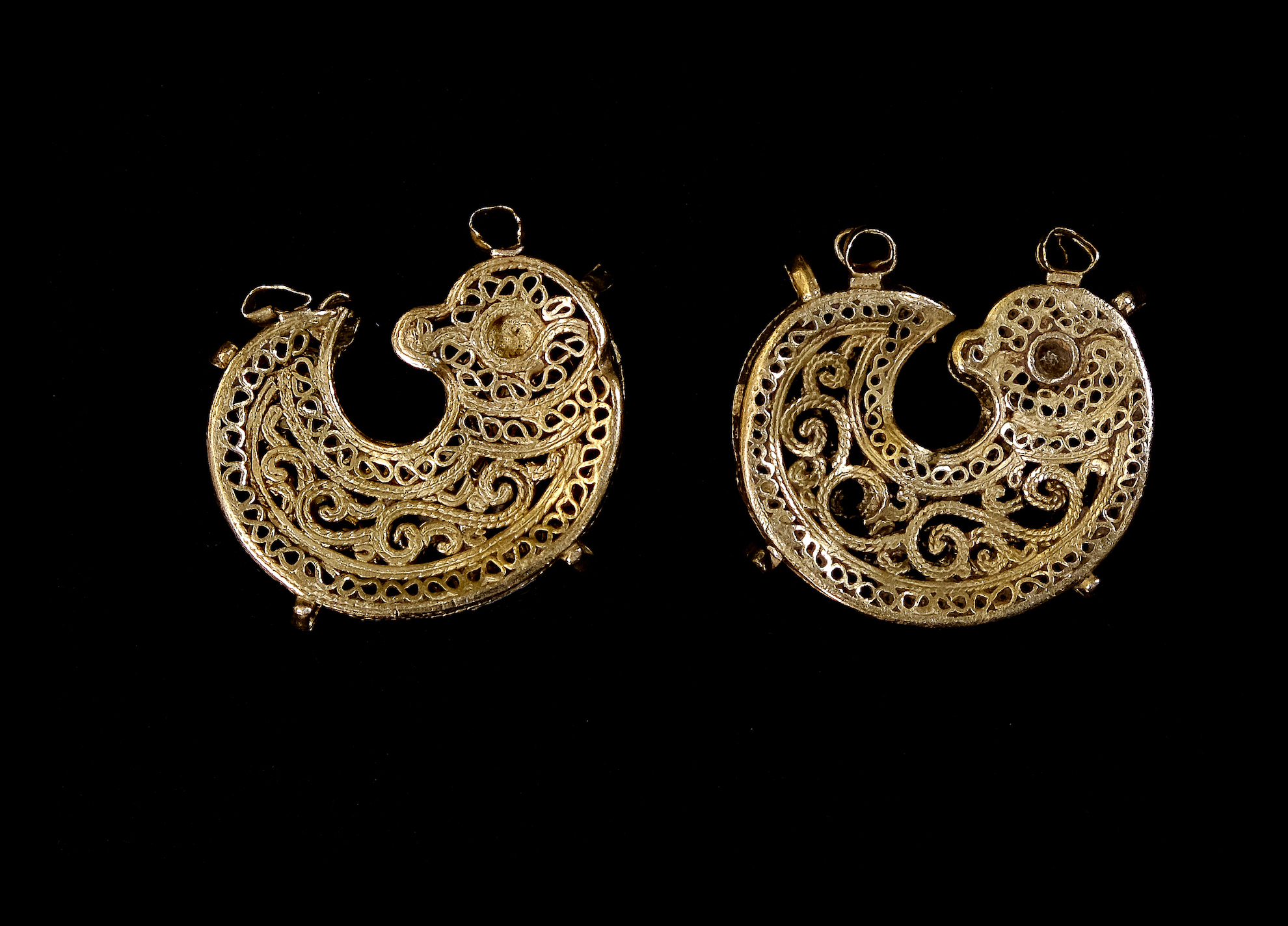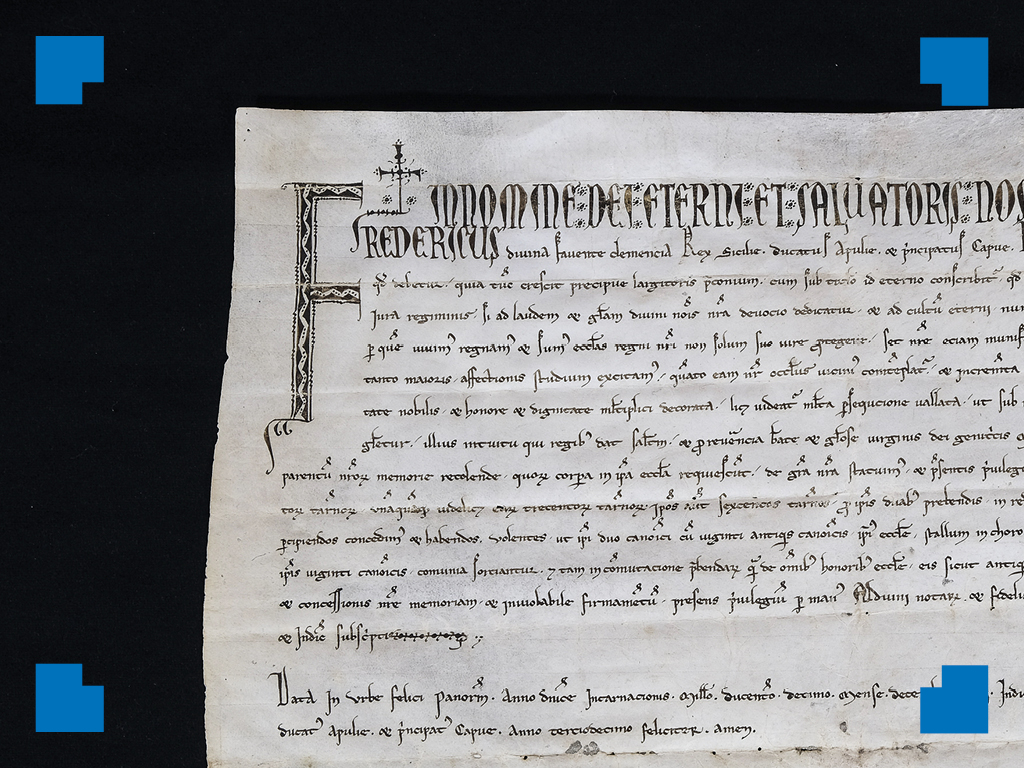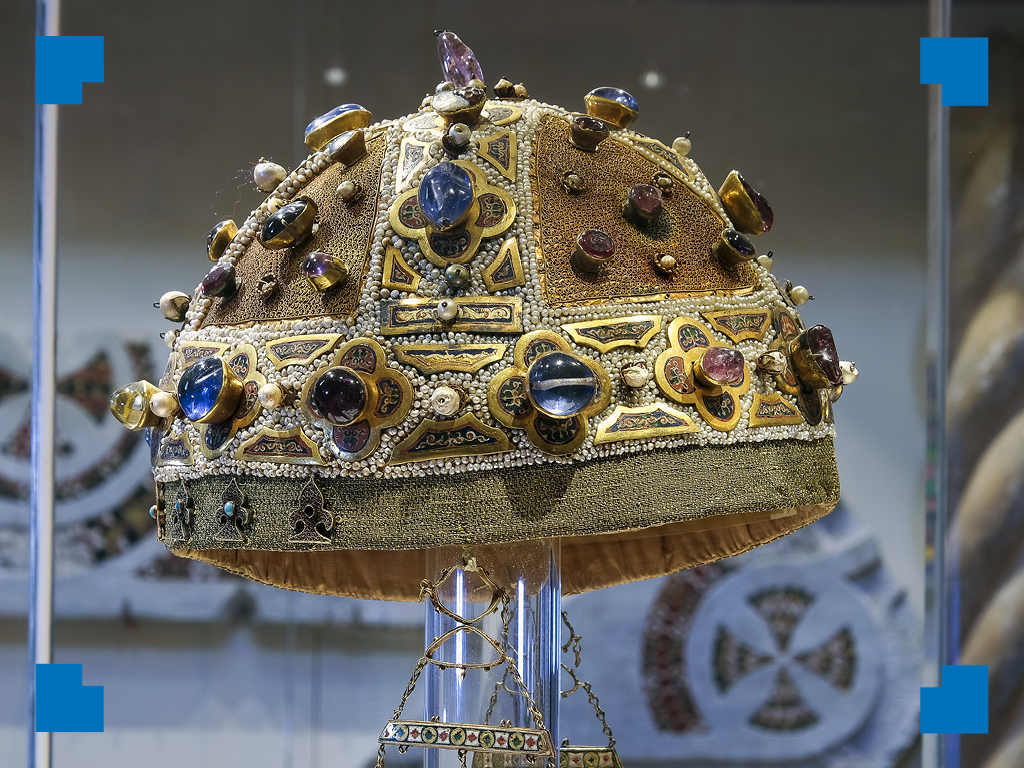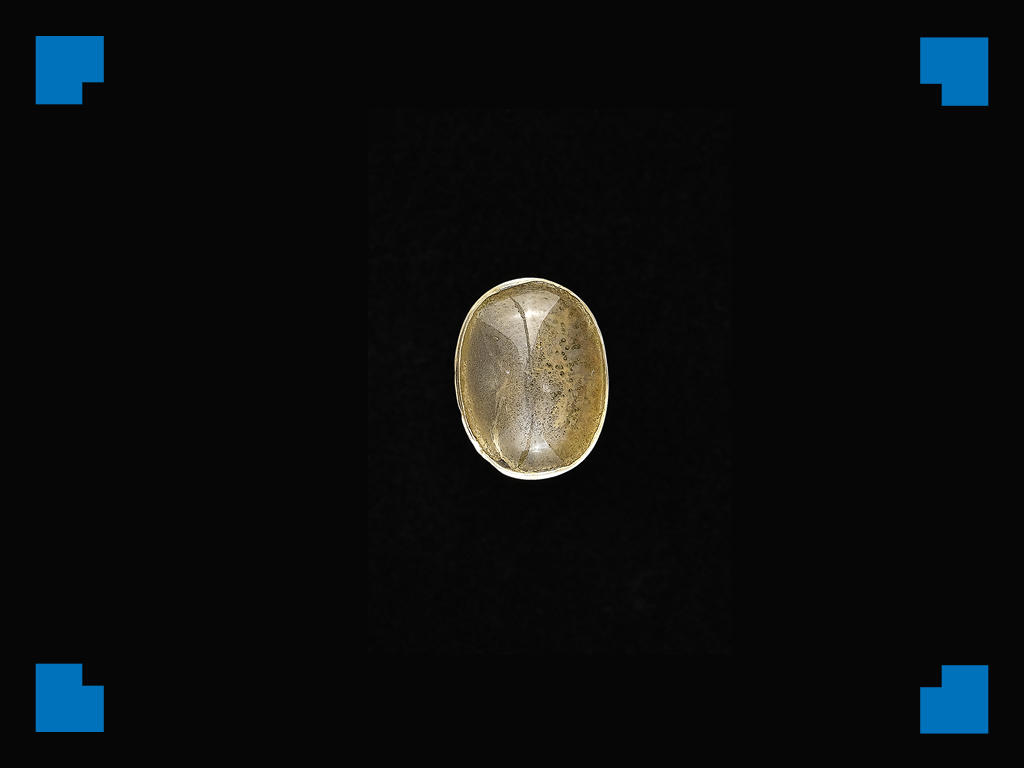
19. Earrings called ‘of Constance’
Sicilian craftsmen, end of 12th c.
Earrings called ‘of Constance’
gold filigree (2,1×1,8 cm)
Palermo, Regional Art Gallery of Sicily Palazzo Abatellis, cat. 8223
Sicilian gold jewels of the Norman period, in particular those produced in the twelfth century in the workshops (called tiraz in Arabic and ergasterion in Greek) of the Royal Palace of Palermo, can be recognized by the frequent use of a kind gold filigree known as “vermicelli”, together with pearls, precious stones and enamels, thus combining the Islamic tradition that flourished under the dynasty of the Fatimid caliphs (descendants of Fatima, Mohammed’s daughter) to the Byzantine one.
The earrings here on display can be added to the famous jewels from the sarcophagus of Constance of Aragon (cat. 21, 26, 27). They are traditionally called “of Constance”, because they can be dated between the end of the reign of William II and the accession to the throne of Empress Constance of Hauteville, mother of Frederick II.
Their shape refers to the so-called “basket” typology, with birds with hooked beak seen in profile. The empty spaces in correspondence of the eyes probably contained river beads, gems or colored glass paste.


